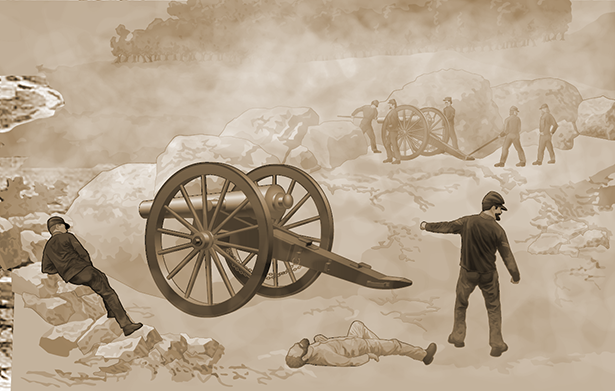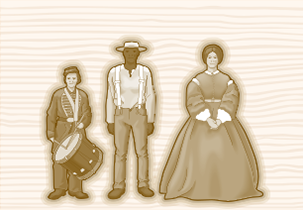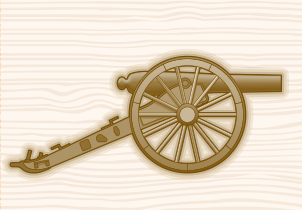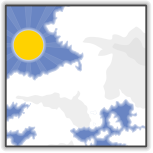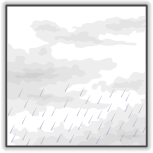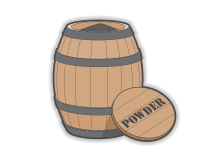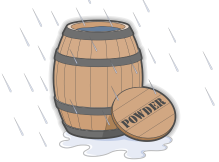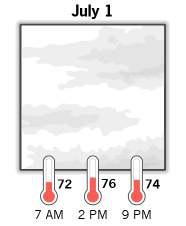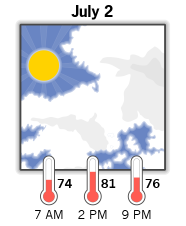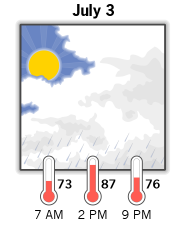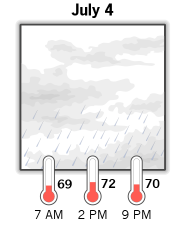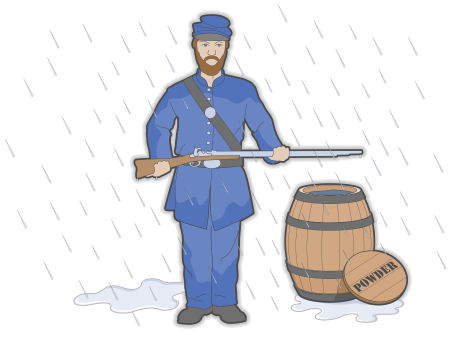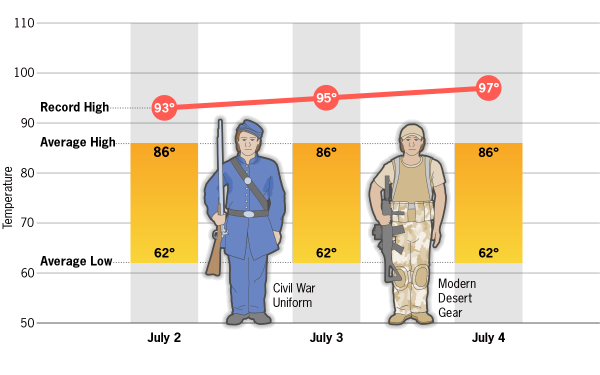
In early July, 1863, troops from General Robert E. Lee’s Army of Northern Virginia (the Confederates) met up with a patrol of Union cavalry on the outskirts of Gettysburg, Pennsylvania. Over the next three days, this encounter grew into a turning point of the Civil War. Lee’s forces battled against General Meade’s Army of the Potomac (the Union). When the battle was over, Lee’s army was defeated, and his aim of taking Civil War fight into the north had ended. The war would continue for another eighteen months, but Gettysburg changed the course of the conflict.

